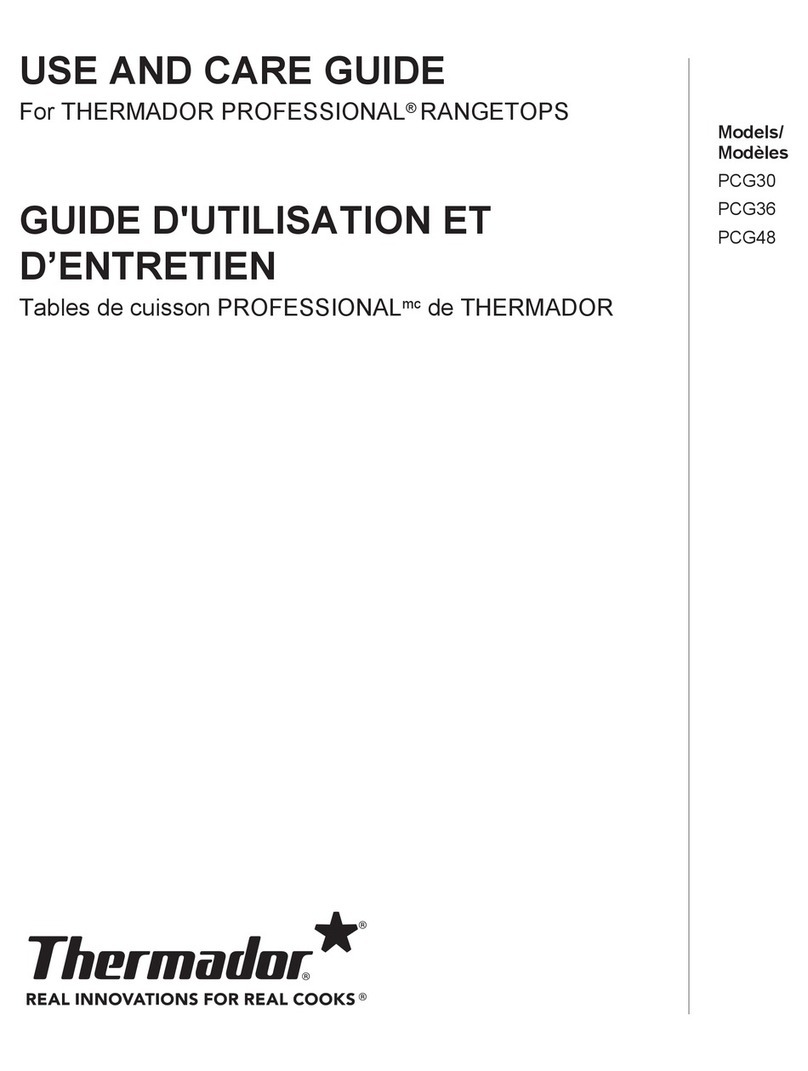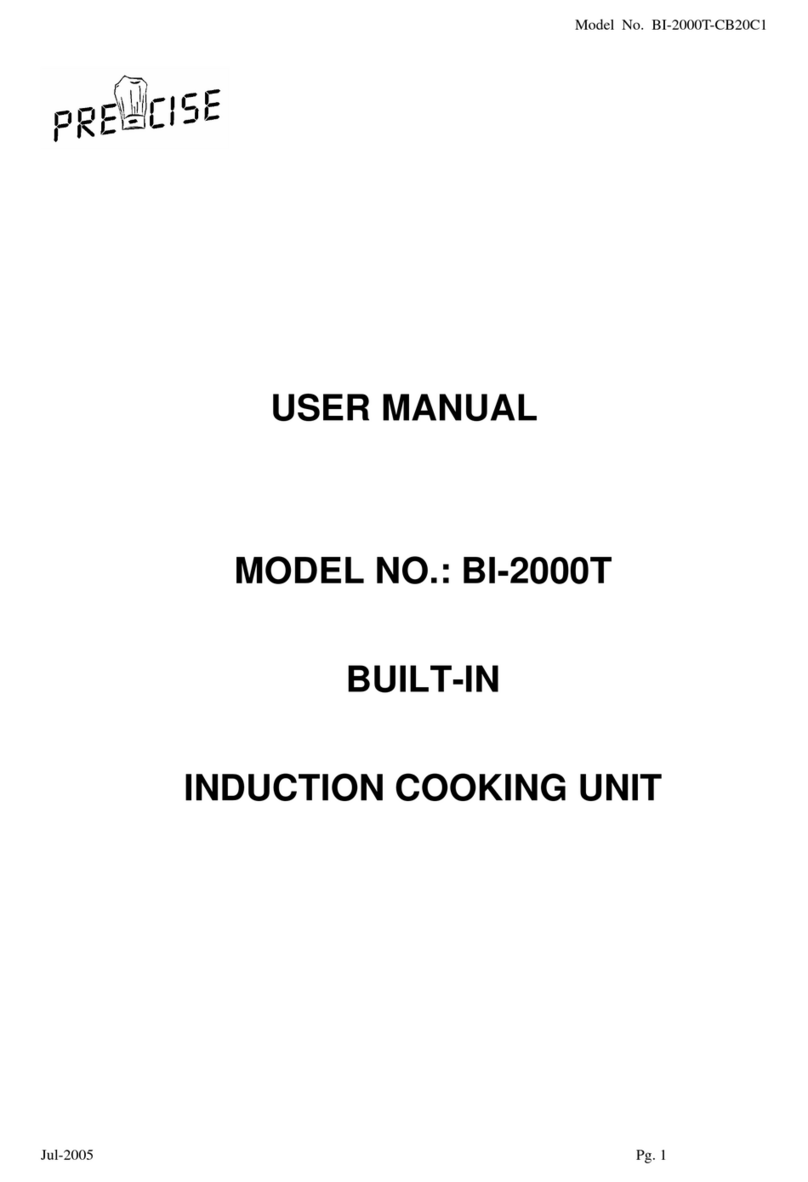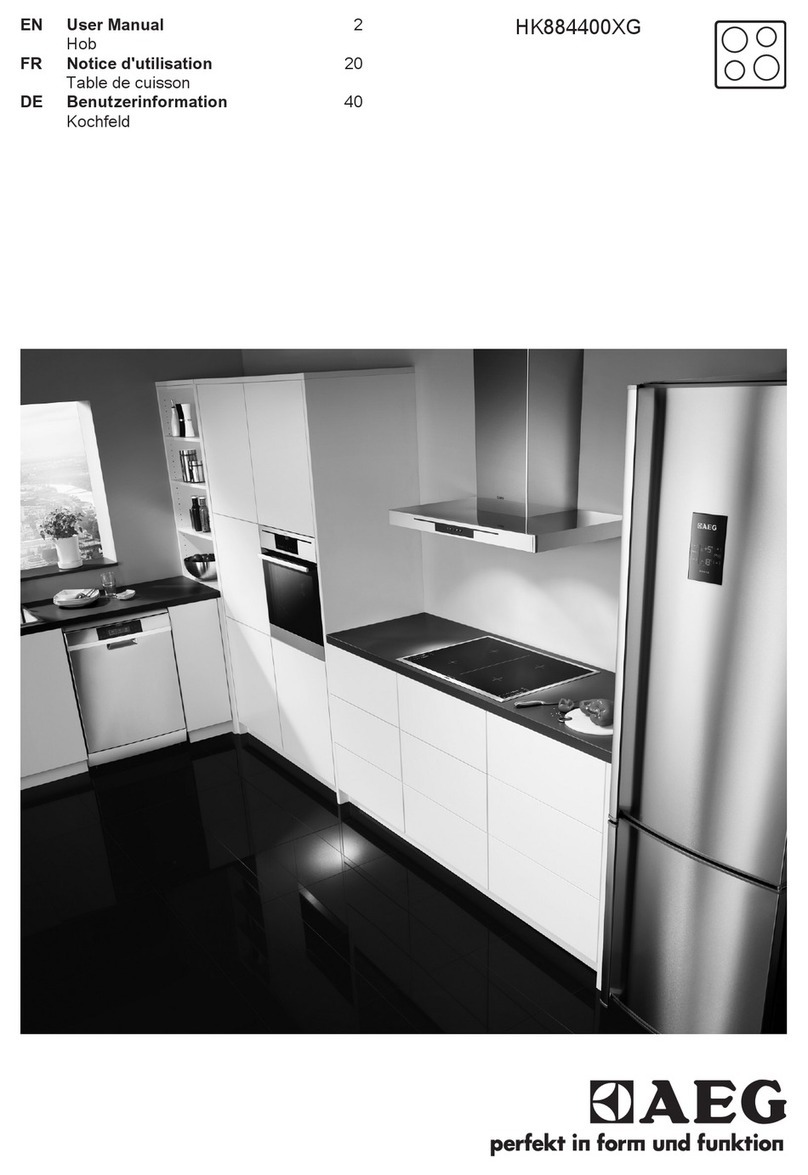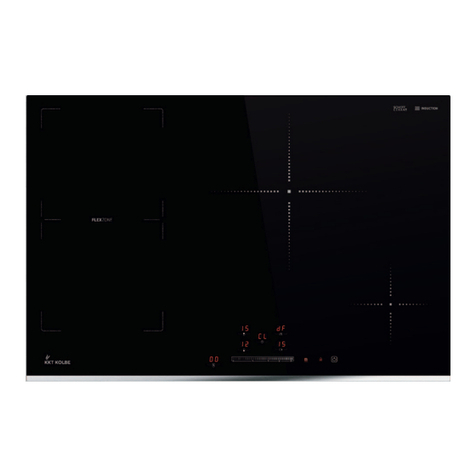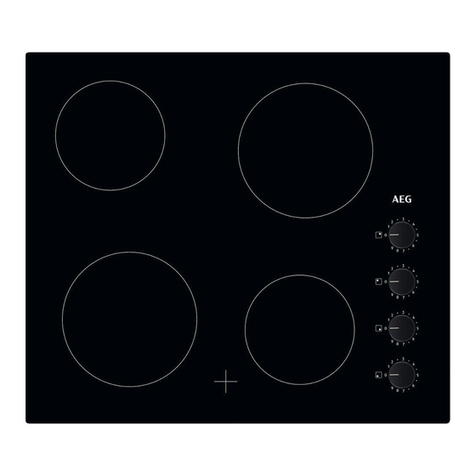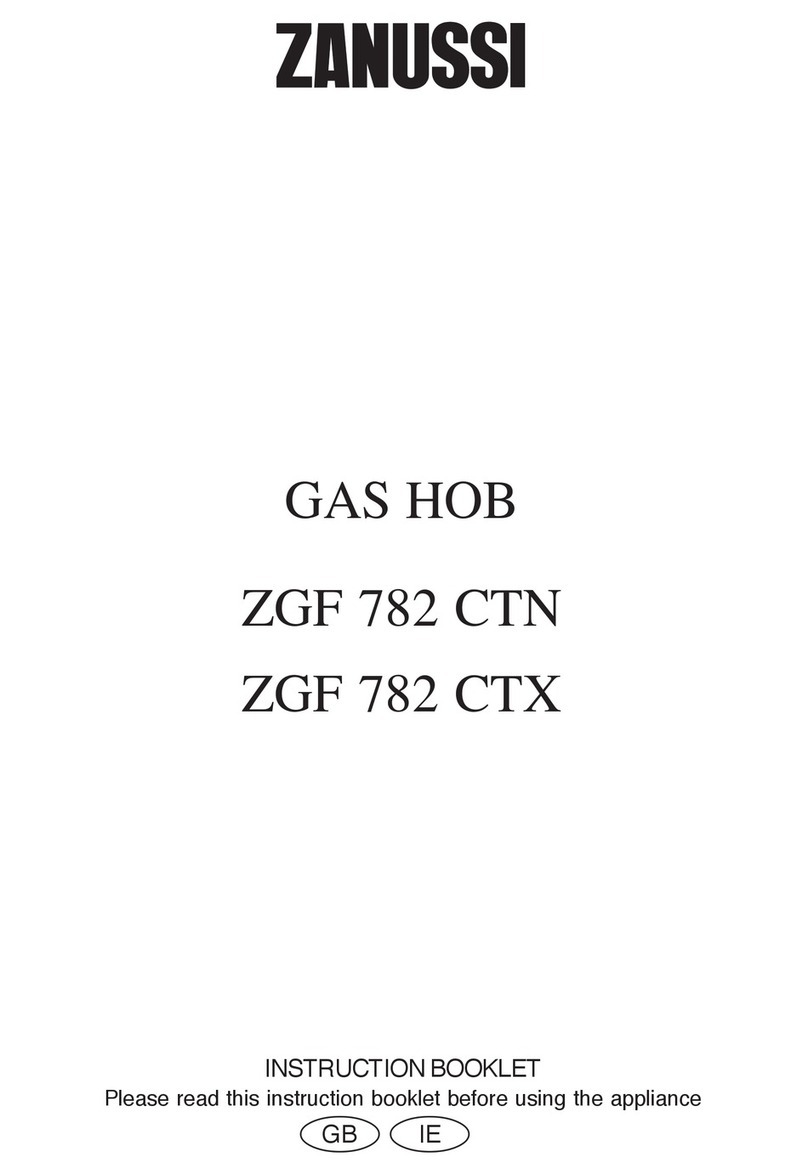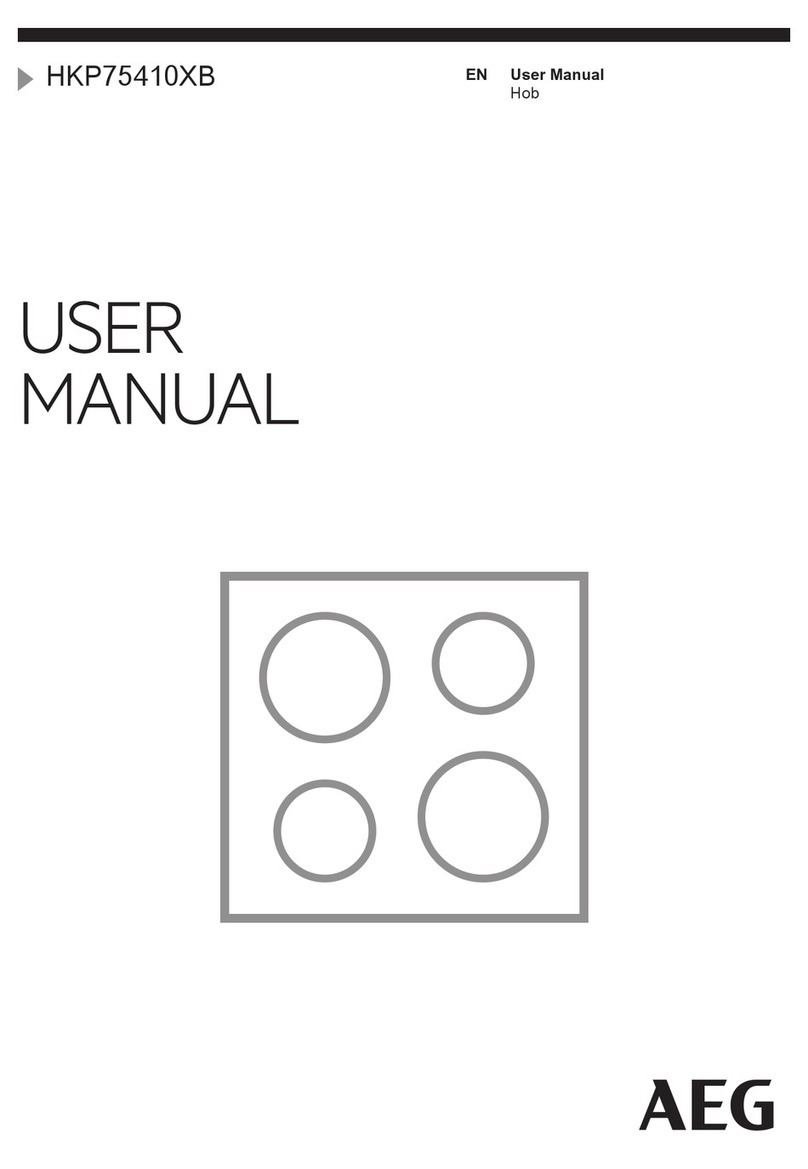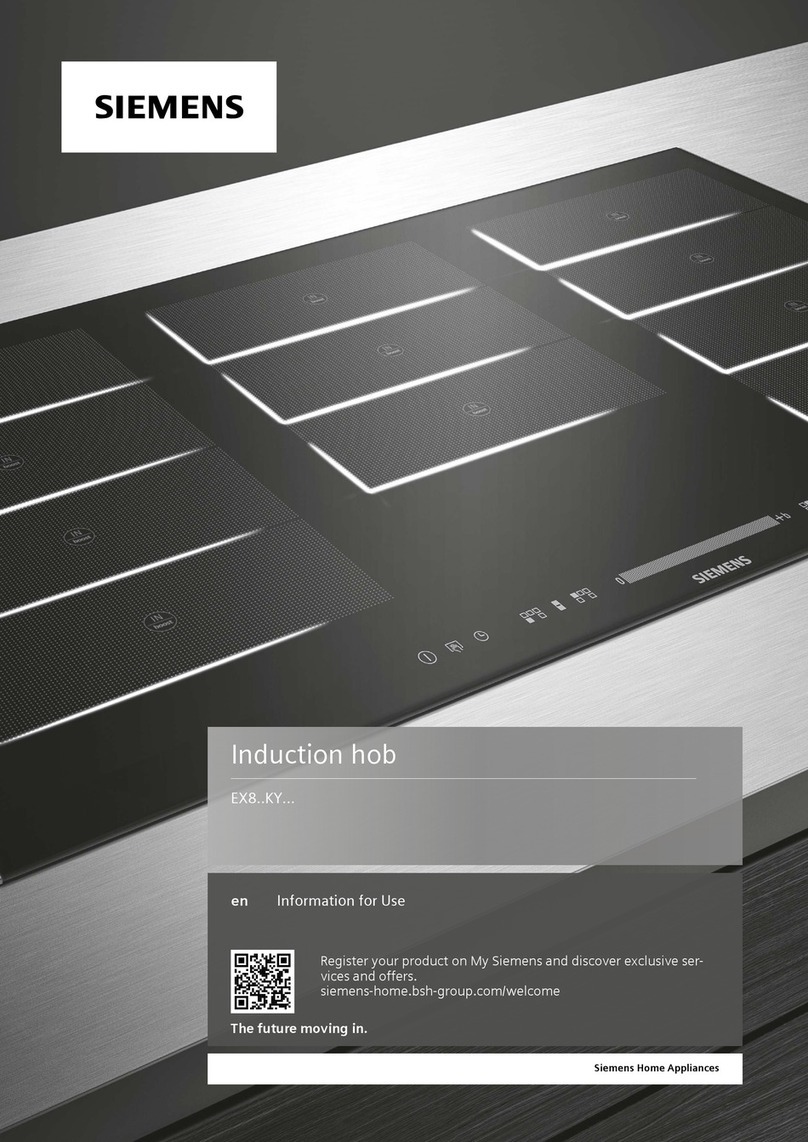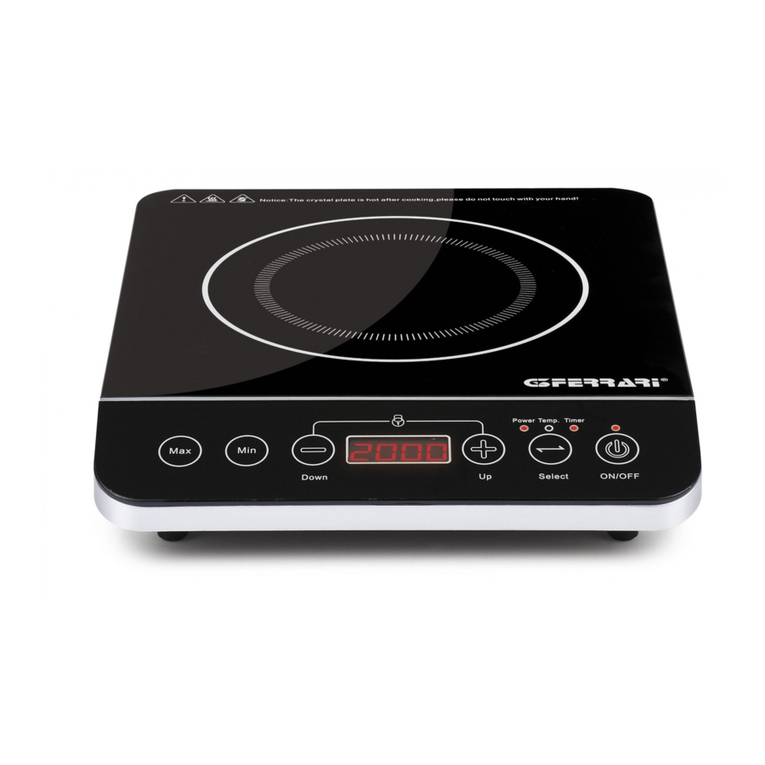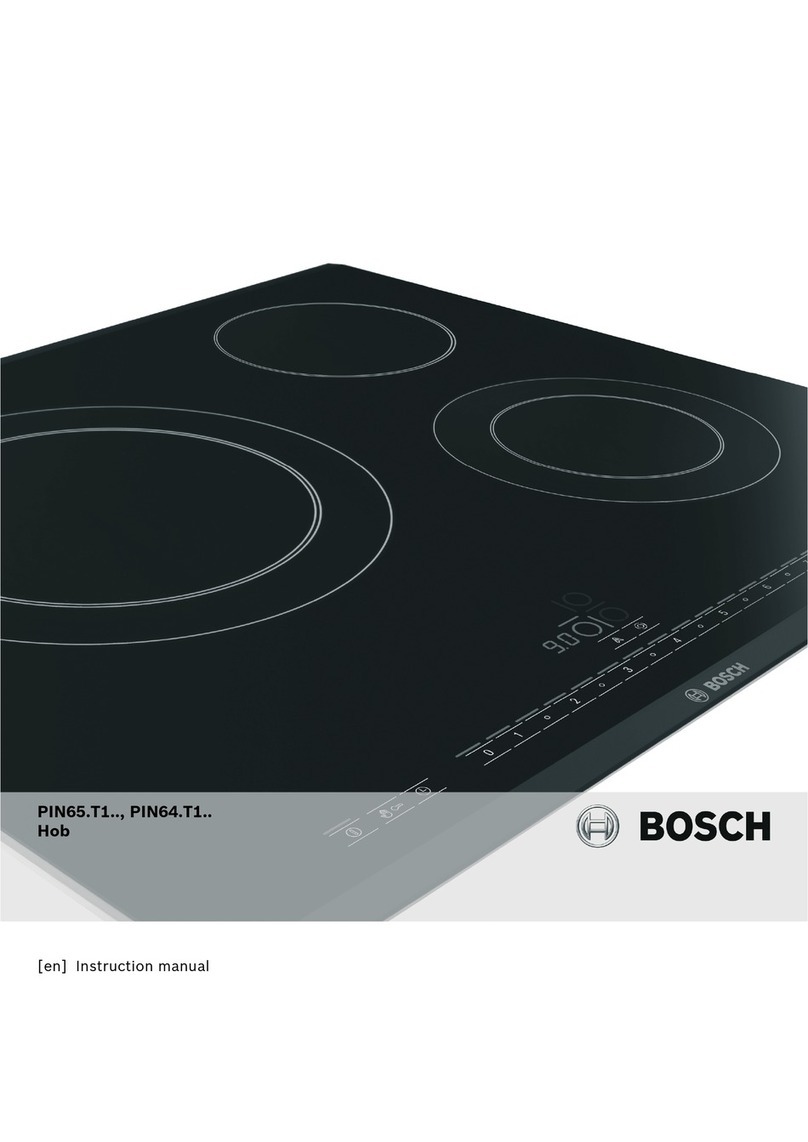
Service Manual for the Thermador Professional Series Rangetop, Model PCG366G
58300000151625_ARA_EN_BPage 2 of 34
TABLE OF CONTENTS
1General........................................................................................3
1.1 Included with the Product......................................................3
1.2 Optional Accessories (Not Included).....................................3
1.3 Data Plate..............................................................................3
1.4 Recommended Tools and Supplies ......................................4
1.5 Important Safety Information.................................................4
1.5.1 Safety Symbols Used In This Manual............................4
1.5.2 Safety Precautions to Know Prior to Servicing...............4
2Operation.....................................................................................7
2.1 Control Knobs........................................................................7
2.1.1 ExtraLow Feature...........................................................7
2.2 Automatic Re-ignition............................................................7
2.3 Operation during a Power Outage.........................................8
2.4 Main Components and Locations..........................................8
2.4.1 Burner Assembly and Maintop.......................................8
2.4.2 Components under the Maintop.....................................9
3Testing Burners and Ignition.....................................................9
3.1 Before Testing.......................................................................9
3.2 Burner Characteristics.........................................................10
3.3 Flame Characteristics..........................................................10
3.4 Testing Burner Ignition........................................................11
3.5 Testing the HI Setting..........................................................11
3.6 Testing the SIM Setting.......................................................11
3.7 Testing the XLO Setting......................................................11
3.8 Manually Setting Burner Valves - Natural Gas Units...........11
3.8.1 Tools Needed...............................................................11
3.8.2 Adjusting the Bypass Screws.......................................11
3.9 Burner, Flame, and Ignition Troubleshooting......................12
3.9.1 Burner and Flame Diagnostics.....................................12
3.9.2 Ignition Diagnostics......................................................12
4Service and Repair...................................................................14
4.1 Preparing the Rangetop for Servicing.................................14
4.1.1 Removing Knobs, Grates and Burner Assemblies ...... 14
4.1.2 Removing the Maintop................................................. 16
4.1.3 Removing the Heat Shield........................................... 16
4.2 Component Removal and Replacement............................. 17
4.2.1 Jet Holder Assembly and Burner Support Rail Removal
and Replacement....................................................................... 17
4.2.2 Jet Holder Assembly Removal and Replacement ....... 19
4.2.3 Manifold Removal and Replacement........................... 20
4.2.4 Standard Valve Removal and Replacement................ 22
4.2.5 Microswitch Removal and Replacement...................... 23
4.2.6 Solenoid Valve Removal and Replacement ................ 24
4.2.7 XLO Valve Removal and Replacement....................... 25
4.2.8 Potentiometer Removal and Replacement.................. 27
4.2.9 Control Panel Removal and Replacement................... 28
4.2.10 Regulator Removal and Replacement......................... 30
4.2.11 Ignition Device Removal and Replacement................. 31
4.2.12 LED Indicator Removal and Replacement................... 31
4.2.13 Simmer Control Board Removal and Replacement..... 32
5Before Returning Appliance To Service ................................ 33
6Clean-Up ................................................................................... 33
7Technical Specification........................................................... 33
8Additional References............................................................. 34
8.1 QuickFinder ........................................................................ 34
8.2 Technical Support............................................................... 34
